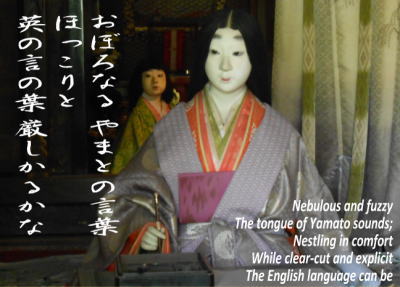Differences Between English and Japanese
 Linguistic Differences Linguistic Differences
How is English different from Japanese? Let’s start with a general linguistic comparison.
Language Family
English is Indo-European and Japanese, Japonic. The Indo-European family finds its roots in the Pontic–Caspian steppe, while the Japonic (or Japanese-Ryukyuan) family presumably came from the Korean peninsula.
Language Type
English is an analytic language, but Japanese is a synthetic language (agglutinative language). Having lost inflectional or fusional characteristics as an Indo-European language, English has ceased to be synthetic and become an analytic language where word order and auxiliary words such as prepositions determine inter-word relationships. On the other hand, Japanese is a synthetic language that defines words’ meaning by agglutinating morphemes (minimum meaningful word part).
Vocabulary
Being a descendant from the Indo-European family, English shares many roots with other Indo-European-based languages such as German, French, Spanish, Italian, Portugues, etc. By contrast, the Japanese lexicon includes countless loanwords from the Chinese culture, Buddhism, and Confucianism.
Sentence Order
English uses the subject-verb-object (SVO) order, and Japanese is a subject-object-verb (SOV) language. However, since the latter uses a topic-comment sentence structure, its subject and object may sometimes be inconspicuous.
Head-initial vs. Head-final
English phrases are head-initial, while Japanese uses head-final structures. “Head” here means the element determining the phrase category. In the example below: “woman” and “女性” are the heads.
Head-initial: He met a woman who was from Japan and had two children*.
Head-final: 彼は、日本から来た二人の子供を持つ女性 に出会った。
* The longer the red part becomes, the more brain-teasing in Japanese since the destination (head) becomes more distanced.
Subject-prominent vs. Topic-prominent
English is a subject-predicament (subject-prominent) language but Japanese, topic-comment (topic-prominent) language. Therefore, English generally structures a sentence to describe the subject (the doer) using the predicate. Instead, Japanese sentences aim to express an introduced topic (or theme) and add new information about it as a comment (rheme).
 Other Grammatical Differences Other Grammatical Differences
- English uses the Latin alphabet. The Japanese writing system includes kanji, hiragana and katakana (Japanese alphabets), and romaji.
- English has definite and indefinite articles and grammatical numbers, while Japanese has none.
- Japanese verbs and adjectives have rich conjugations compared to English, which has watered down those features during its history.
- Japanese have rich sentence-final particles to add emotional or emphatic nuances, which English doesn’t have.
- Japanese has a complex honorifics system not found in English.
Those are significant linguistic differences between the two languages. However, since no language is independent of the cultures, history, pathos, ethos, and logos where it’s spoken, let me elaborate more under the following titles:

Just like any other language, Japanese is uniquely beautiful.
|



